California’s environmental governor, Jerry “I Used to be Moonbeam but Now I’m Too Senile” Brown, and Attorney General Xavier Becerra filed a lawsuit in September 2017 to block border wall construction, claiming such construction violated state and national environmental laws – while ignoring the environmental disaster at their feet.
Becerra announced the state’s border wall lawsuit during a press conference at Border Field State Park near Imperial Beach, a park whose southernmost border is mere feet from the border fence. Ironically, on the day of his press conference the road to that park was closed, as it is for significant portions of the year, the lowest part of it washed out by sewage and chemical flow coming into the area from Mexico.
AG @XavierBecerra takes some shots at Trump: He hasn't made the transition from candidate to president. #borderwall pic.twitter.com/liSJdrAK2v
— Jazmine Ulloa (@jazmineulloa) September 20, 2017
Becerra didn’t bother to share with the journalists who’d trudged to his photo op just how toxic the “water” they walked through was, but Border Patrol agents who work there daily and who are suffering negative health consequences from exposure are acutely aware of its toxicity.
The waste continually flows into the United States via the Tijuana River, which enters the country just to the west of the San Ysidro Port of Entry. It empties into the Pacific Ocean between the border and Imperial Beach, a quintessential California beach town. When it rains, built-up trash and debris flow over the border, and when it really, really rains, Border Patrol agents have seen furniture, cars, cattle, and bodies float past.
In 2017 I wrote about a massive sewage “spill” at a Mexican wastewater treatment plant that sent millions of gallons of untreated s*** into the Pacific Ocean and closed beaches in southern San Diego County. A few months later, while moderating a panel on immigration at a conference, I met Christopher Harris, a Border Patrol agent who also serves as Director of Legislative and Political Affairs for the National Border Patrol Council. Harris told me that while the sewage spill was horrible, it was but one incident in an ongoing environmental disaster at the border – and that he was happy to have me tour the border with him and see for myself.
Last Friday I was finally able to take Harris, now a newly-retired Border Patrol agent, up on his offer. Though I’ve covered immigration and border issues for quite some time, I was astounded by what I saw. Our first stop was at a post along the Tijuana River adjacent to the Port of Entry.
As Harris narrates in the video (created by the Surfrider Foundation), industrial chemicals, pesticides, and heavy metals such as chromium and cadmium are also found in the water.
From there Harris took us to a post where the river flows into the U.S. This photo was taken between the two border fences. There wasn’t much water there that day, but the smell was horrible. The grates show evidence of where they’ve been breached and fixed over the years. Border crossers armed with sawzalls cut through the metal, and as part of their duties Border Patrol agents have to fix the damage as quickly as possible to prevent more incursions.
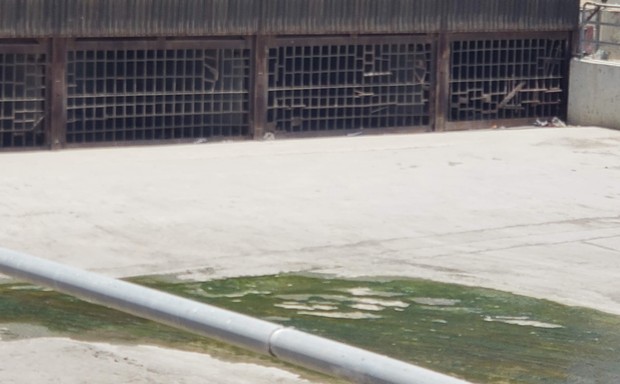
Agents are stationed at posts next to this toxic soup every day, exposed to fumes throughout their shifts.
As we were making our way to the next stop, Agent Harris pointed out this trash-filled stormwater drain under the border wall. (The wall shown is a portion of the first border wall, made up of scrap military landing grates and constructed by the National Guard in the early 1990s.)
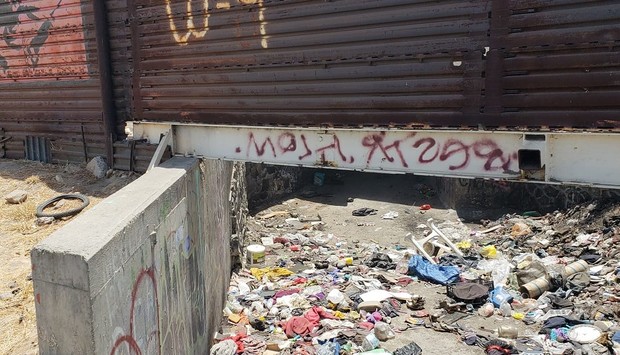
During the next rainstorm, all of that trash, and the trash built up behind it, will flow into the United States. The trash could end up deposited on federal land or California State Parks land, and the lucky winner will get to pay for the privilege of cleaning up the contaminated debris. We passed piles of debris as big as cars on California State Parks land; Harris said debris cleanup cost the state $1.3 million just in 2017.
Then on to the beach, where the wall meets the water. From there we could see the wetlands, Imperial Beach, Coronado, and up to Point Loma. It’s a breathtaking view.
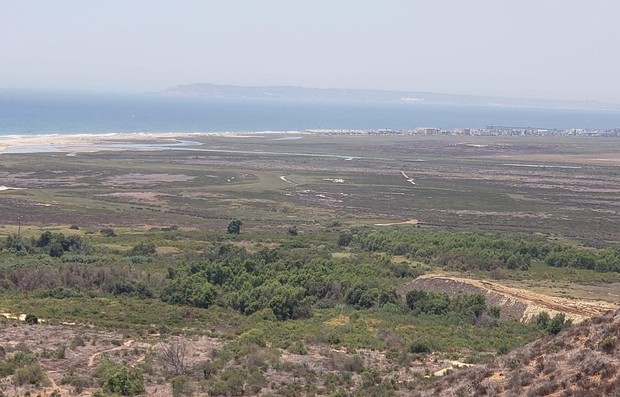
We made our way down to Border Field State Park and where the border wall meets the ocean.
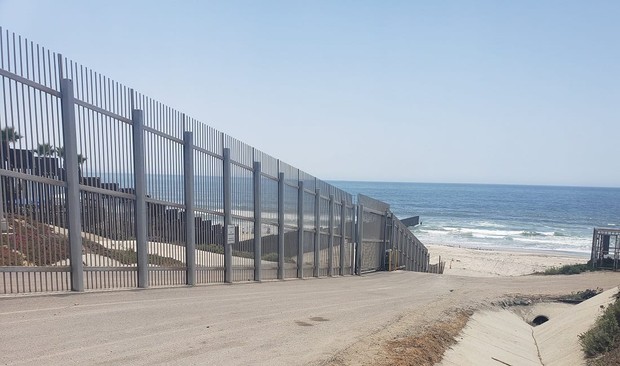
There were a few families frolicking on the sand and people riding horses on the beach. If I didn’t know how contaminated the area was, it would have been a wonderful sight.
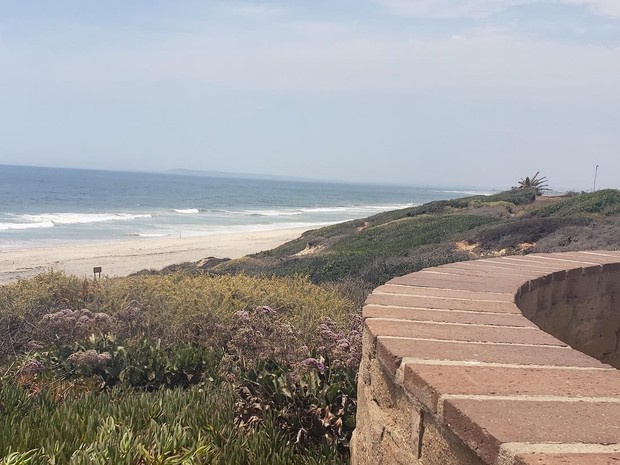
The road to the park was open that day, but as we made our way toward Goat Canyon warning signs were still on site.
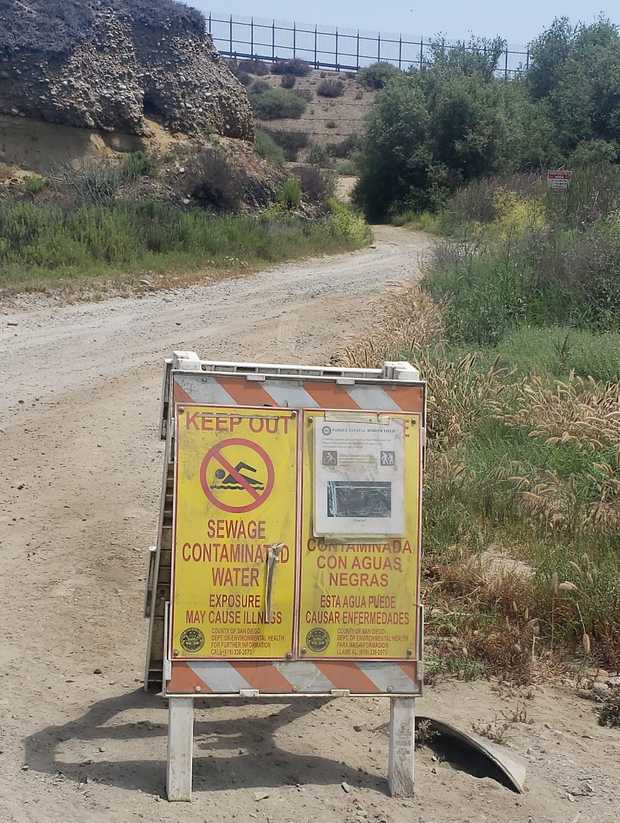
Harris told us that the Border Patrol performs periodic fecal bacteria testing on the Tijuana River water in various locations. All of the stations are many times higher than the public health standard, but in Goat Canyon it’s thousands of times higher than the public health standard. The May 1 results are astounding.
| Tijuana River Fecal Bacteria Study Results, May 1, 2018 | ||
| Station | E. coli (MPN/100 mL) | Total Coliform (MPN/100 mL) |
| Public health standard | 235 | 10,000 |
| Drain 234-2 | 898.8 | 54,750 |
| IBWC gauge | 5,730 | 198,630 |
| Goat Canyon | 23,330,000 | 86,640,000 |
I could smell the funk at Goat Canyon before I could see it.
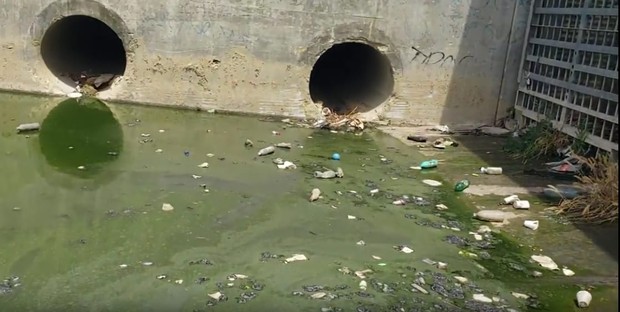
This photo doesn’t convey just how disgusting Goat Canyon was. Agent Harris told us that on some border tours he’s led, the fumes are so bad that participants start wheezing or having respiratory difficulty right there. Unfortunately, people live just on the other side of the grate, in the drainage area. People – including women and children – who have been caught crossing the border illegally have told the Border Patrol in interviews that they paid thousands of dollars to coyotes to cross the border, and the coyotes sent them through this muck. The coyotes simply told their “customers” they’d cross through a drainage ditch that had some mud and water in it. No big deal, right?
It’s a very big deal. Border Patrol agents have developed rashes from exposure, and one agent was permanently disabled after contracting an infection from nerotizing fasciitis (flesh-eating bacteria) in 2010. Agent Joshua Willey’s arm was swollen to “the size of a volleyball,” and he narrowly avoided having to have his arm amputated.
None of us touched anything near the Goat Canyon site (or anywhere else). When I got back in the car I absentmindedly rubbed my eye, and I immediately felt a stinging sensation. Harris advised us to wipe our shoes with Clorox bleach wipes when we got home. He said agents are advised to keep their boots and gear at work, so their families won’t be contaminated.
Clearly, the blame for this isn’t solely on the State of California. The International Boundary and Water Commission is a bi-national agency charged with overseeing water treaties between the U.S. and Mexico. According to Border Patrol and Imperial Beach officials, the IBWC has failed to provide any solutions. Imperial Beach is suing the federal government for violations of the U.S. Clean Water Act, and the National Border Patrol Council Local 1613 is considering legal action as well.
Jerry Brown and Xavier Becerra are quick to sue the federal government when it fits their political preferences, but clearly don’t want to take any action that blames Mexico for anything. State Senator Ben Hueso, a Democrat, has had enough, and introduced a resolution asking the governor to sue the federal government over the pollution. His initiative, SJR-22, passed the Senate and is on third reading in the Assembly.
As Harris said, “My guys are willing to face the dangers inherent in law enforcement. That’s part of the risks inherent to our job. But what’s not part of our risks is working in a sewer or a toxic dump. That’s not part of our job, and we’re not going to accept that.”
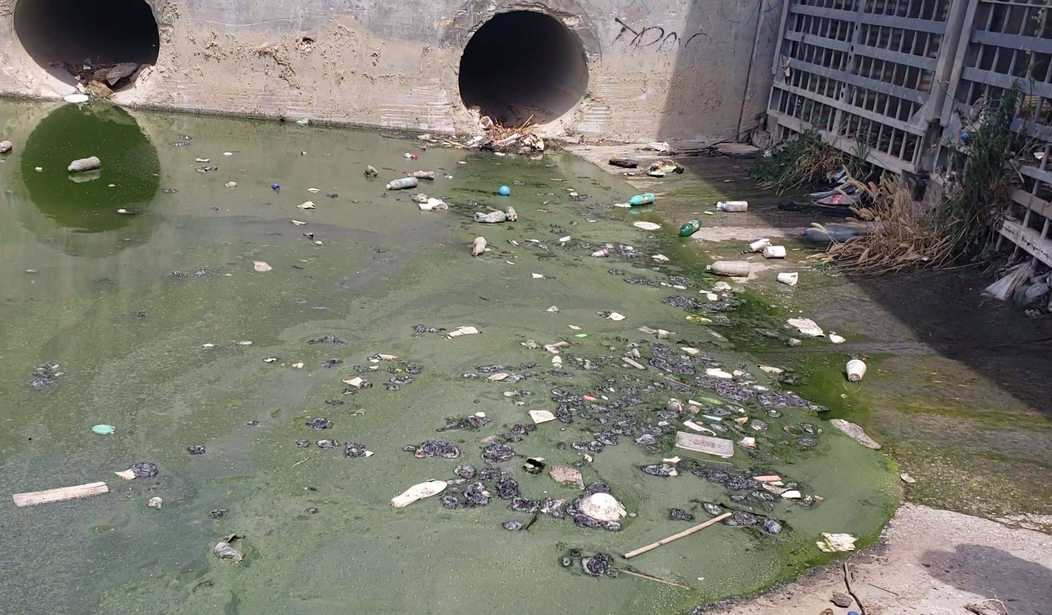










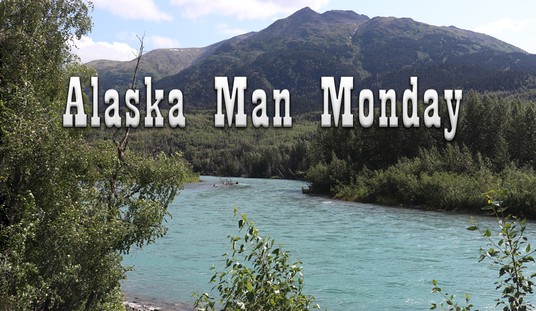


Join the conversation as a VIP Member